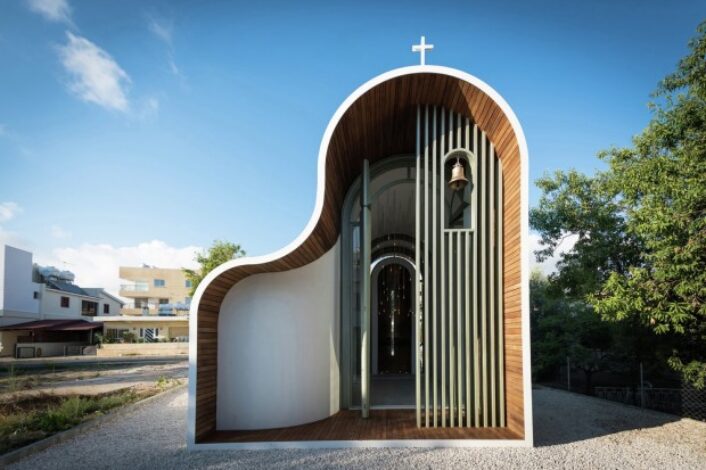Architecture
Mario Botta’s Church of San Giovanni Battista at Mogno
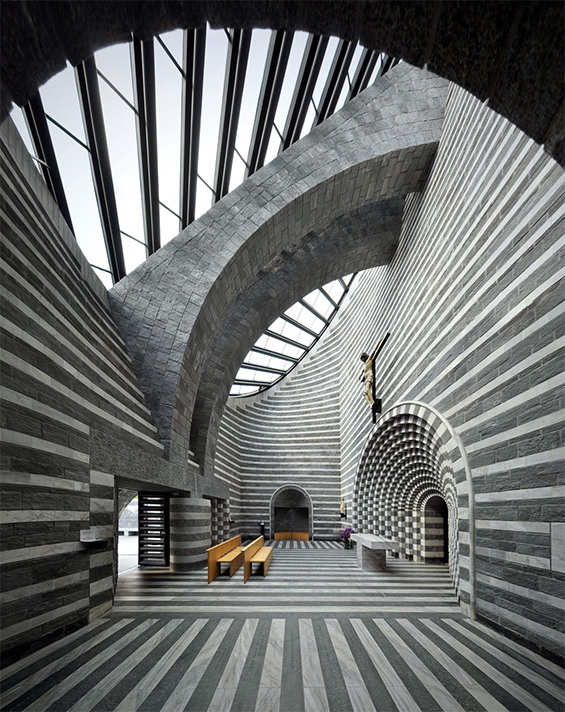
The small church, that was rebuilt by Botta, is dedicated to John the Baptist.
Image courtesy of: Phaidon
The Church of San Giovanni Battista at Mogno was rebuilt between 1992 and 1996 by the well-known Italian architect, Mario Botta. The church was built on the site of the small 17th-century chapel that was destroyed by the 1986 avalanche that decimated the small village of Mogno in Maggia Valley.
Sadly, the avalanche leveled the church and there was little left to salvage. Nevertheless, Botta managed to find two mid-eighteen-century bells that were pulled out of the rubble. Those cherished finds now have a home in the new building.
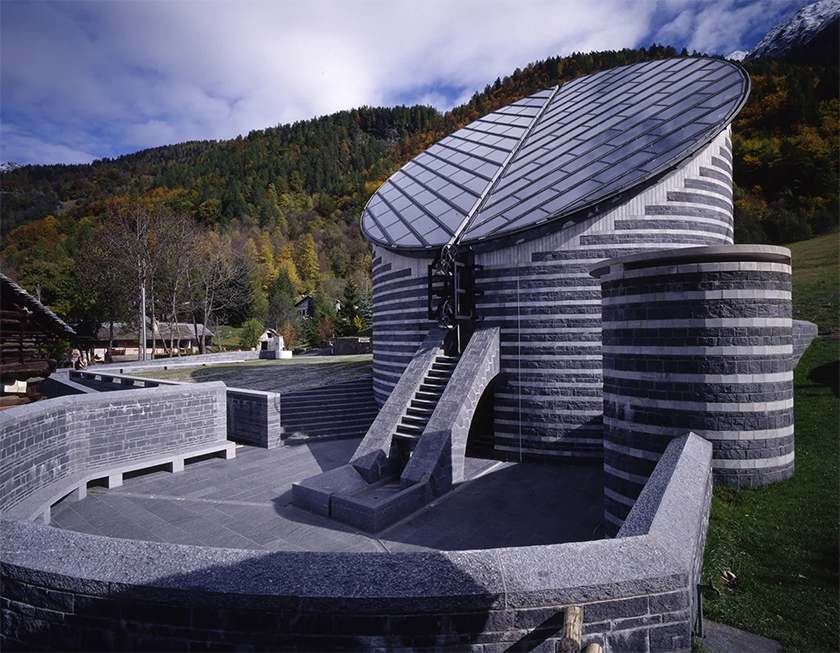
Since it stands in the destroyed church’s footprint, the church is tiny. The interior only seats 15 people.
Image courtesy of: Architectural Digest, photographed by: Enrico Cano
Botta designed the church to rise up from the site of the ravaged 17th-century chapel. The contemporary building stands out among the village’s traditional houses because of its cylindrical shape. The use of essential shapes in the church’s architecture is interesting. A rectangle is inscribed within an external ellipse that changes into a circle at the roof’s level. The end result is a contemporary display of unusual architecture which is especially striking in a region of traditional buildings and homes.
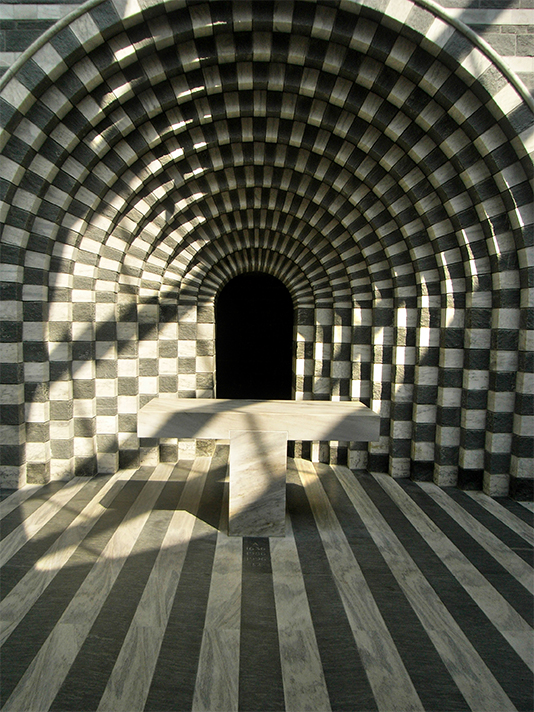
View of the altar in San Giovanni Battista in Mogno.
Image courtesy of: Wiki Media
Clearly, ensuring that the church is secure enough to withstand future natural disasters was essential. In addition to strong and stable products, Botta also wanted to use local materials. Thus, the stripy church is clad inside and out in alternating bands of grey Riveo granite and white Peccia marble, both of which are native to the region.
William Hall who authored “Stone”, a book about 170 stone structures, from prehistory times through today, said, “Alternate layers of white marble and dark gneiss from neighboring quarries provide lively and uplifting patterning. Daylight floods the tiny church through the sloping glass ceiling.”
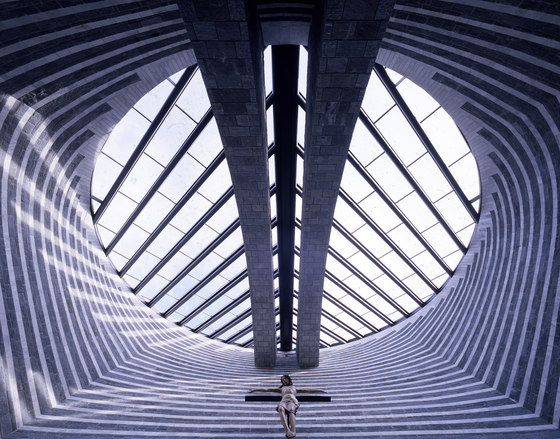
The church was constructed with local stones from the Maggia Valley. The gneiss (a rock with similar qualities to granite) was extracted from the Riveo quarry and the marble came from the Cristallina quarry in the Sidevalley of Peccia. These materials are similar to what was used in some Tuscan Romanesque cathedrals.
Image courtesy of: Architonic, photograph courtesy of: Enrico Cano
The church’s angles are striking, the glass circular roof is cut in a diagonal which emphasizes the juxtaposition of glass and stone. The strength of the walls conveys an unmovable force that is elegantly balanced by the lightness of the roof’s glass cover. Botta, with his unconventional design, even excluded conventional windows. Rather, the church is illuminated via the glass roof.
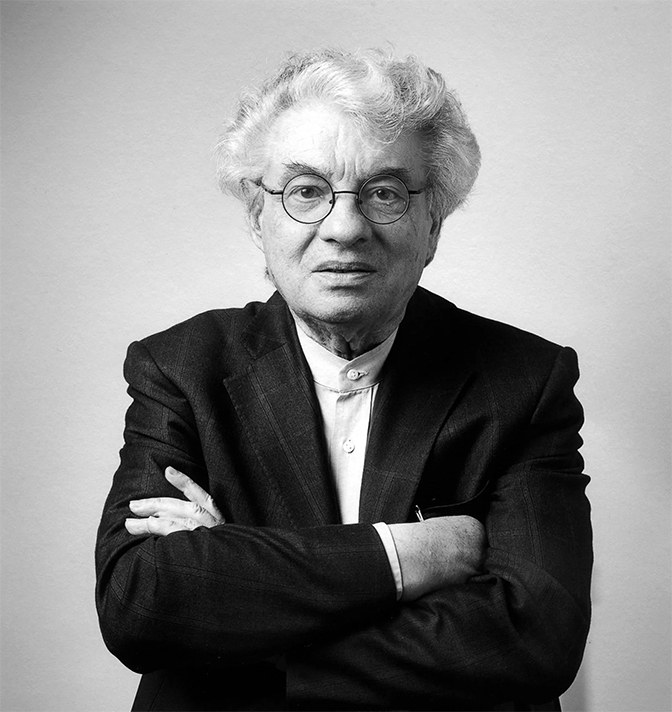
Mario Botta.
Image courtesy of: Architectural Digest, photographed by: Nicola Gnesi
Understandably, the design of the “new” Church of San Giovanni Battista at Mogno was initially controversial. However today, this striking stone building has found fans both locally and from far away. Having designed multiple “sacred spaces,” Botta says about his passion and fascination for religious arenas, “What draws me to sacred spaces is the millennary history characterizing these building typologies. When designing I’m not so interested in the future as I am in the values of the great past.”
